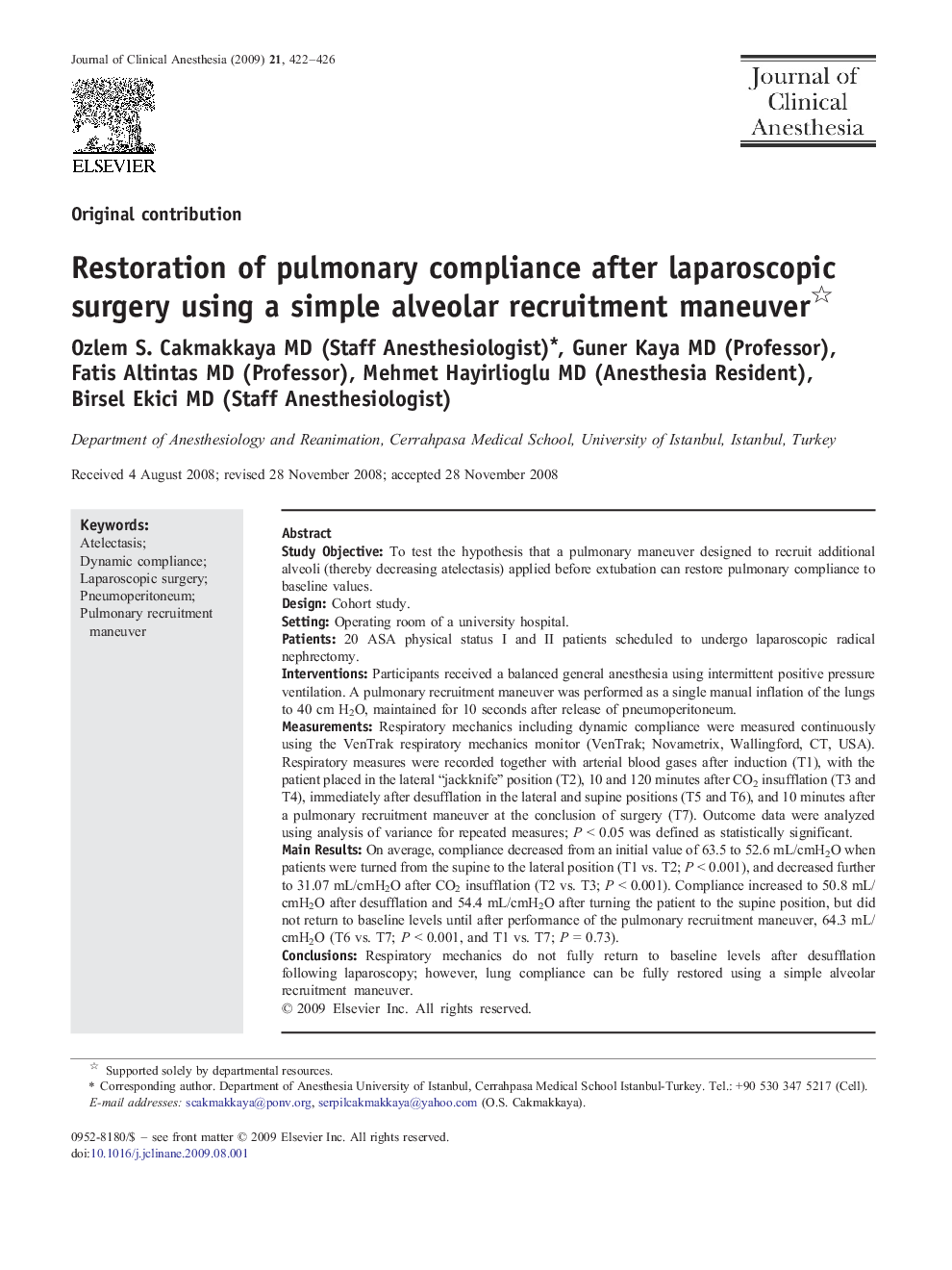| Article ID | Journal | Published Year | Pages | File Type |
|---|---|---|---|---|
| 2763370 | Journal of Clinical Anesthesia | 2009 | 5 Pages |
Study ObjectiveTo test the hypothesis that a pulmonary maneuver designed to recruit additional alveoli (thereby decreasing atelectasis) applied before extubation can restore pulmonary compliance to baseline values.DesignCohort study.SettingOperating room of a university hospital.Patients20 ASA physical status I and II patients scheduled to undergo laparoscopic radical nephrectomy.InterventionsParticipants received a balanced general anesthesia using intermittent positive pressure ventilation. A pulmonary recruitment maneuver was performed as a single manual inflation of the lungs to 40 cm H2O, maintained for 10 seconds after release of pneumoperitoneum.MeasurementsRespiratory mechanics including dynamic compliance were measured continuously using the VenTrak respiratory mechanics monitor (VenTrak; Novametrix, Wallingford, CT, USA). Respiratory measures were recorded together with arterial blood gases after induction (T1), with the patient placed in the lateral “jackknife” position (T2), 10 and 120 minutes after CO2 insufflation (T3 and T4), immediately after desufflation in the lateral and supine positions (T5 and T6), and 10 minutes after a pulmonary recruitment maneuver at the conclusion of surgery (T7). Outcome data were analyzed using analysis of variance for repeated measures; P < 0.05 was defined as statistically significant.Main ResultsOn average, compliance decreased from an initial value of 63.5 to 52.6 mL/cmH2O when patients were turned from the supine to the lateral position (T1 vs. T2; P < 0.001), and decreased further to 31.07 mL/cmH2O after CO2 insufflation (T2 vs. T3; P < 0.001). Compliance increased to 50.8 mL/cmH2O after desufflation and 54.4 mL/cmH2O after turning the patient to the supine position, but did not return to baseline levels until after performance of the pulmonary recruitment maneuver, 64.3 mL/cmH2O (T6 vs. T7; P < 0.001, and T1 vs. T7; P = 0.73).ConclusionsRespiratory mechanics do not fully return to baseline levels after desufflation following laparoscopy; however, lung compliance can be fully restored using a simple alveolar recruitment maneuver.
